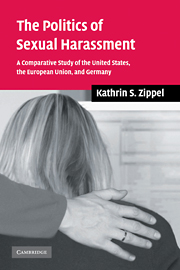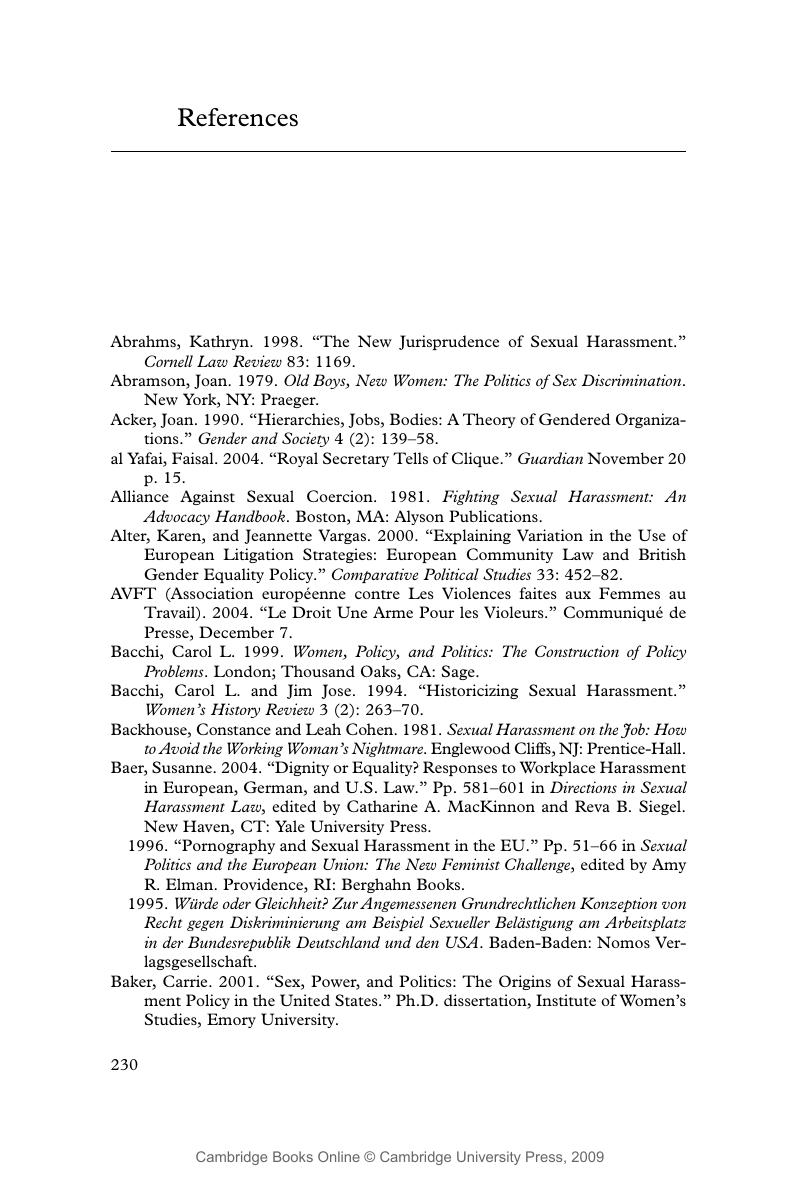 The Politics of Sexual Harassment
The Politics of Sexual Harassment Book contents
- Frontmatter
- Contents
- List of tables
- Preface
- List of abbreviations
- 1 Sexual harassment and gender equality
- 2 Equality through litigation: sexual harassment in the United States
- 3 Diffusion through supranational actors: sexual harassment in the European Union
- 4 The political path of adoption: feminists and the German state
- 5 “Good behavior versus mobbing”: employer practices in Germany and the United States
- 6 Social movements, institutions, and the politics of sexual harassment
- Appendix A List of cited interviews
- Appendix B Data collection
- References
- Index
- References
References
Published online by Cambridge University Press: 22 September 2009
- Frontmatter
- Contents
- List of tables
- Preface
- List of abbreviations
- 1 Sexual harassment and gender equality
- 2 Equality through litigation: sexual harassment in the United States
- 3 Diffusion through supranational actors: sexual harassment in the European Union
- 4 The political path of adoption: feminists and the German state
- 5 “Good behavior versus mobbing”: employer practices in Germany and the United States
- 6 Social movements, institutions, and the politics of sexual harassment
- Appendix A List of cited interviews
- Appendix B Data collection
- References
- Index
- References
Summary

- Type
- Chapter
- Information
- The Politics of Sexual HarassmentA Comparative Study of the United States, the European Union, and Germany, pp. 230 - 247Publisher: Cambridge University PressPrint publication year: 2006


